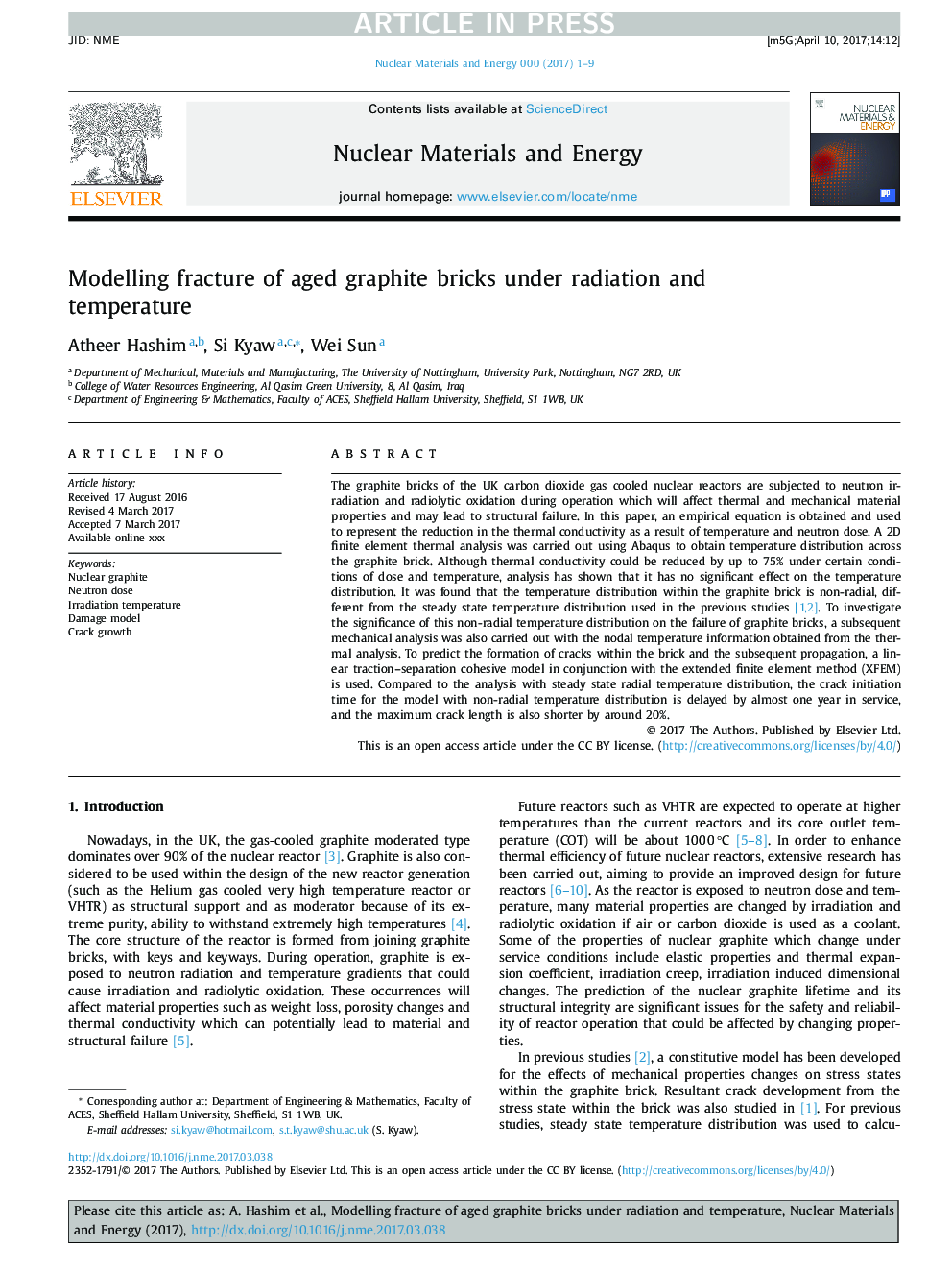| Article ID | Journal | Published Year | Pages | File Type |
|---|---|---|---|---|
| 5457091 | Nuclear Materials and Energy | 2017 | 9 Pages |
Abstract
The graphite bricks of the UK carbon dioxide gas cooled nuclear reactors are subjected to neutron irradiation and radiolytic oxidation during operation which will affect thermal and mechanical material properties and may lead to structural failure. In this paper, an empirical equation is obtained and used to represent the reduction in the thermal conductivity as a result of temperature and neutron dose. A 2D finite element thermal analysis was carried out using Abaqus to obtain temperature distribution across the graphite brick. Although thermal conductivity could be reduced by up to 75% under certain conditions of dose and temperature, analysis has shown that it has no significant effect on the temperature distribution. It was found that the temperature distribution within the graphite brick is non-radial, different from the steady state temperature distribution used in the previous studies [1], [2]. To investigate the significance of this non-radial temperature distribution on the failure of graphite bricks, a subsequent mechanical analysis was also carried out with the nodal temperature information obtained from the thermal analysis. To predict the formation of cracks within the brick and the subsequent propagation, a linear traction-separation cohesive model in conjunction with the extended finite element method (XFEM) is used. Compared to the analysis with steady state radial temperature distribution, the crack initiation time for the model with non-radial temperature distribution is delayed by almost one year in service, and the maximum crack length is also shorter by around 20%.
Related Topics
Physical Sciences and Engineering
Energy
Nuclear Energy and Engineering
Authors
Atheer Hashim, Si Kyaw, Wei Sun,
